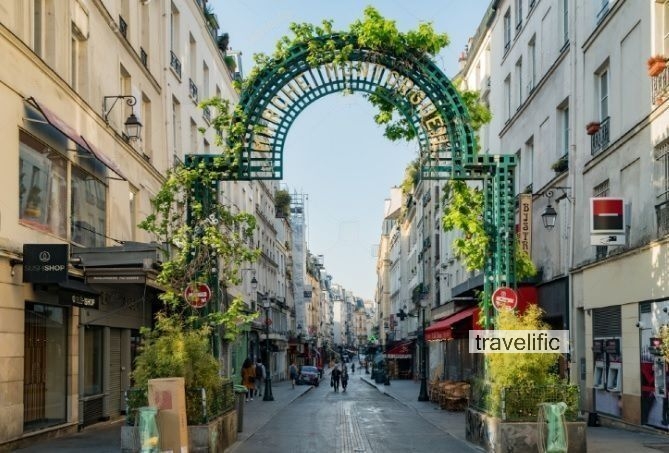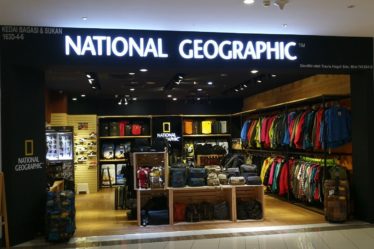
THREE days into my Paris vacation and I have developed a morning routine. At 7am, I lace my trainers and jog along its pavements, passing construction workers ready to rumble and boulangeries filling their glass displays with just-baked baguettes.
The air is dry and crisp and the noise minimal as the city is not completely awake yet.
From my hotel in Montparnasse, I jog to Boulevard Saint-Germain, past the literary Cafe Flore, make my way to Pont de la Concorde and after a U-turn, the Jardin des Tuileries is now on my left and the River Seine on my right. I run alongside cyclists and Parisians walking to work, men in suits and women in black.
I approach the Louvre. The pyramid stands alone. It´s too early for camera clicks and tourist poses. Then I run past Notre Dame at Ile de la Cite and arrive at the little island before jogging to the right bank again. I cross the bridge, approaching Institut du Monde Arabe on Rive Gauche, or Left Bank, and make my way back to my hotel via the Latin Quarter and Jardin du Luxembourg.
It is a 90-minute run and I have never ran a more breathtaking route in my life.
With its compact layout, Paris is best explored on foot. Unless it´s too far out, ditch the Metro. If you are suitably geared in comfortable walking shoes, a map and a bottle of water, you´ll find that being a flaneur (stroller) is the best way to explore the tiny, cobblestone streets of the French capital.
Rue Montorgueil

By noon, this street, a few steps away from the bustling Les Halles, flourishes with Parisians having dejeuner (lunch) and workers unloading fruit and vegetables. Easily one of my favourite roads in Paris, this right bank stretch, which was originally an oyster market, embodies the city´s rustic lifestyle.
The shops are old-fashioned and charming, the street crowded but never commercial. There is a small store for everything – fruit, vegetables, meat, fish, cheese, bread, flowers – all lined up with fresh goods.
Tables are set on the pavements selling flowers and in the evening, the road transforms into a hip space where people eat and drink.
A host of eateries dot the space, like Au Rocher de Cancale which serves salads so massive they are meals on their own. My Salade Cancale is a bed of greens topped with a thick, juicy slab of smoked salmon and two triangles of wholemeal toast with light dressing. It´s healthy heaven on a plate.
Rue des Rosiers
At Le Marais, just west of Bastille, rue des Rosiers flourishes with quirky shops – I find one selling only globes, in all sizes and colours, but at past 5pm, it´s closed for the day.
It is littered with fashion stores selling off-beat brands, the complete opposite of rue de Rivoli´s rows of high street fashion offerings like Etam, Pimkie, H&M and Zara, just a stone´s throw away.
It is also part of the Jewish settlement, so expect to see shops selling Jewish paraphernalia and a small synagogue nearby. But the main attraction is the falafel shops. This is a vegetarian sandwich in pita pocket that´s filled to the brim.
And the best, as singer Lenny Kravitz would attest (according to the signboard), is by L´as du Fallafel, a small shop with a green facade and consistently long queues.
Rue Mouffetard
This road, near Le Sorbonne, is where students go to eat. This explains the array of cheap eats here, from sit-down cafes to take-away counters offering ice-cream, sweet crepe, crepe with meat filling (some of which are halal).
A section of the road is closed to vehicles and there´s a lively atmosphere here, almost pasar malam-like with colourful leather shoes laid on the pavements and colourful knick-knacks for sale.
Known for its wide array of food (not the Michelin-star kind, but the down-to-Earth type), you can see people queuing up for poulet roti or rotisserie chicken. What´s so tempting about this is that as the rotisserie goes round and round, the chicken fat drops on a heap of sliced potatoes underneath.
And at the end of the road leading to the Latin Quarter is a small market selling fruit and vegetables. The Sunday I am there, a group of elderly couples are having the time of their lives, ballroom dancing as a small crowd watch from restaurant seats.
Boulevard Saint-Germain
The main street on the Left Bank runs parallel to the Seine river, starting at the Latin Quarter and going through the Left Bank, all the way to Assemble Nationale, near Place de la Concorde.
The lifestyle of the Left Bank´s upmarket residents is reflected in its stores. The shops are small, chic and cool.
Dyptique, the French brand famed for its aromatic candles, has its flagship store at No. 34.
Gosselin (which won the city´s best baguette award and was bread supplier to former prime minister Jacques Chirac), calls No. 258 its home and at No. 184, is the Societe de Geographie. Founded in 1821, it is the world´s oldest geographical society. The road meets other Left Bank streets like the fashionable rue Bonaparte, the cafe-centric Rue de Seine and high street shopping stretch Rue de Rennes.
Boulevard Raspail
The best thing about this road is the daily fresh market on a small stretch in the middle. On Sunday morning, there´s the organic market or marche biologique, where stylish Parisians come with cloth totes and glass containers to shop for the day´s supplies.
There are organic vegetables, poultry, cheese, milk, even juices squeezed before you. Warm quiche, organic bread and even freshly-grilled vegetables are aplenty.
Prices are rather steep though, because the market caters to the well-heeled but the choice and quality can´t be beaten. Being environmentally-conscious has never looked so chic!
Paris on a budget
ENTRY to some museums are free on the first Sunday of the month but on other days, the following activities allow you to enjoy the city without breaking your budget.
1. Grab a salad or a baguette from supermarket chain Monoprix and have a picnic at these parks – Tuileries, Luxembourg or Champ de Mars, beneath the Eiffel Tower. Feel free to feed the birds.
2. Buy an ice cream from Grom (81 rue de Seine), Pozzetto (39 rue du Roi de Sicile) or Berthillon (31 rue Saint-Louis-en-I´lle) and stroll along the Seine to watch the sunset.
3. Climb the steps of Sacre Coeur in Montmarte for a bird´s eye view of the city. It´s breathtaking. Be careful of pickpockets, though.
4. Walk to the nearest boulangerie for a take-away breakfast. Nothing beats a warm baguette fresh from the oven.
5. For runners, Paris is breathtaking, with beautiful monuments and historical sites.
Tourists, beware!
OPINIONS differ about the city´s tourist trappings but, by and large, there are three that I avoid when I can.
Avenue des Champs Elysees
It´s as American as any Parisian street can be, and as any Francophile worth his or her well-baked baguette (the bread, not the bag, darling) will tell you, it´s almost criminal to treat a Parisian street so commercially. It´s as obscene as the Abercrombie & Fitch ads prior to the American brand´s gargantuan boutique opening.
This is a historic road. It is the site for military parade on Bastille Day. Le Tour de France ends here. When France won the World Cup in 1998, it was here that the team celebrated. So why is it lined with foreign shops, loud music and fast food?
Le Bon Marche
It´s in almost all tourist guide materials but Le Bon Marche, the city´s excellent and gigantic food hall, remains a place to visit, not shop. Don´t get me wrong. It is laden with exquisite goods. There are heart-shaped brown sugar cubes you can “clip” on to your espresso mug and drop in the coffee. There are chocolate choices from four corners of the world. But the prices are steep. A bar of chocolate that costs 2.75 Euros (RM11.75) in Monoprix, Ed or Carrefour can cost 2 Euros (RM8.50) more here.
Chain boulangerie
The best breads come from small shops, never a chain. So avoid a name you can find in every corner and where workers wear a uniform. Always trust your neighbourhood boulangerie. They never disappoint. Pick your favourites – from baguettes to croissants to brioche – and you will realise why no one makes pastry like the French.



Узнайте, что такое дератизация и какие основные способы борьбы с грызунами. Порядок проведения, основные требования, периодичность процедуры. Профилактика распространения вредителей. … Мероприятия по уничтожению грызунов направлены на снижение их популяции. Работы можно условно разделить на два вида: Истребительные меры. Применяются непосредственно для борьбы с мышами, крысами, сусликами и другими вредителями.
Дератизация – это комплекс мероприятий по борьбе с грызунами. Это важный процесс, который позволяет защитить здания, земельные участки, жилые дома и производственные помещения от разрушительной деятельности грызунов.